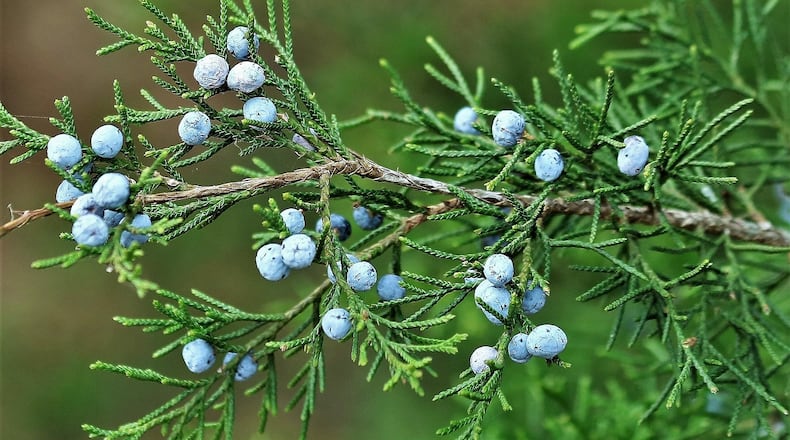I was in Coffee County deep in southeast Georgia the other day and decided to pay a visit to a national champion — a grand Eastern red cedar tree growing in a rural cemetery in the county.
The magnificent old tree made its debut on the National Register of Champion Trees in 2018. At 57 feet tall, a crown spread of 75 feet and a circumference of nearly 300 inches, it is the largest known specimen of its kind in the nation, according to the American Forests organization.
Believed to be more than 200 years old, the graceful old tree grows in the Methodist Lone Hill Cemetery in Coffee County. I found the tree seemingly in good health and still shading headstones.
But it got me thinking how common Eastern red cedars are in old cemeteries all over Georgia and the entire South. Few old cemeteries seem to be without them. The species, in fact, is found so often in Southern cemeteries that it’s sometimes called the “graveyard tree.” A reason perhaps, according to folklorists, is that red cedars often were planted in burial grounds because their long lives and needled evergreen foliage symbolized eternal life.
The Eastern red cedar also is common throughout Georgia in the wild, able to tolerate most soils, even harsh ones. Because its wood has a pleasant, aromatic odor and moth-repellent properties, it has been used extensively for closet linings, chests and wardrobes. The decay-resistant wood also is good for fence posts and siding for homes. Most pencils once were made from cedar wood.
Red cedars are especially abundant on Georgia’s coastal islands, where birds and squirrels use the trees' stringy bark for nests, white-tailed deer savor its evergreen foliage and songbirds get excellent nutrition from its berries (or cones) during the fall.
IN THE SKY: From David Dundee, Tellus Science Museum astronomer: The Draconid Meteor shower will peak at a maximum of 20 meteors per hour Wednesday night. Best viewing — in the northern sky after midnight. The moon will be last quarter next weekend. Mercury is low in the west around dusk. Venus, low in the east, rises about an hour before sunrise. Jupiter and Saturn are high in the southwest after dark. Mars rises in the east just after dark and will outshine Jupiter as it makes a close approach of 38.5 million miles from Earth on Tuesday — the closest it will be until 2035.
About the Author
The Latest
Featured


